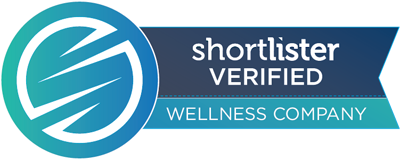
“Only 12% of knowledge workers say they intend to return to working exclusively from an office, while an overwhelming 72% want a combination of office and remote work.”1
Work-from-home, in some form, is here to stay. It is this flexibility that employees have been seeking for years and businesses are listening. What’s more, employees are looking for flexibility not only for where they work but also how and when they work as they seek to balance the demands of both their personal and professional lives. That could mean making time for regular lunchtime home-workouts or opting for flex-hours to ensure that family member needs are met. Employees are recognizing the need to prioritize their wellbeing in these uncertain times and are looking to their organizations for the support and tools.
Just as the traditional workplace is on its way out, so too are traditional wellbeing programs. What then does your wellbeing program need to do to be relevant and engaging in our new work environment? When looking for a wellness solution for your employees for today and into the future, companies need to ensure they are offering initiatives that are flexible, personalized, holistic and grounded in employee interests and input.
Technology holds the answer. A digital wellness solution allows you to connect with your employees, regardless of where they are based, and ensures employees are able to participate when it works best for their schedules. Promoting your wellness initiatives through a centralized digital hub also means your employees know where to get the most relevant, up-to-date wellness-related communications from your team. What’s more, providing a dedicated app/web platform outside of your business channels (Teams, Zoom, Slack, etc.) show your organization’s commitment to your workforce’s wellbeing and that your company culture truly prioritizes health and happiness.
 What is one of the most significant disadvantages of working from home? It’s the loss of community and teamwork. These missing connections are damaging not just for individuals but business culture, too. Lonely employees have lower job performance, and chronic loneliness can lead to serious health conditions, including coronary heart disease and depression. A digital wellness platform provides that space for your employees to reconnect over shared interests and participate together in reaching health goals whether it is through support and encouragement in a social stream or through company wellness challenges.
What is one of the most significant disadvantages of working from home? It’s the loss of community and teamwork. These missing connections are damaging not just for individuals but business culture, too. Lonely employees have lower job performance, and chronic loneliness can lead to serious health conditions, including coronary heart disease and depression. A digital wellness platform provides that space for your employees to reconnect over shared interests and participate together in reaching health goals whether it is through support and encouragement in a social stream or through company wellness challenges.
When designed on the principles of educating, engaging and inspiring, a wellness platform can drive meaningful participation and provide employees with the opportunity to bond over activities and promote the social connectivity and culture that we once enjoyed in the office. What’s more, organizing holistic and healthy activities aligns your company with the intrinsic values your employees already hold.
Ready to invest in wellbeing to see happier and more productive employees? Request a demo today to see how Sprout can move the wellness needle in your organization.
1. Menabney, Darren. “Slack Found That Only 12% Of Workers Want To Return To The Office Full Time: This Is Good News”, Forbes, September 4, 2020. https://www.forbes.com/sites/darrenmenabney/2020/09/04/slack-found-only-12-of-workers-want-to-return-tothe office-full-time-this-is-good-news/?sh=9ea5b9672467 .
